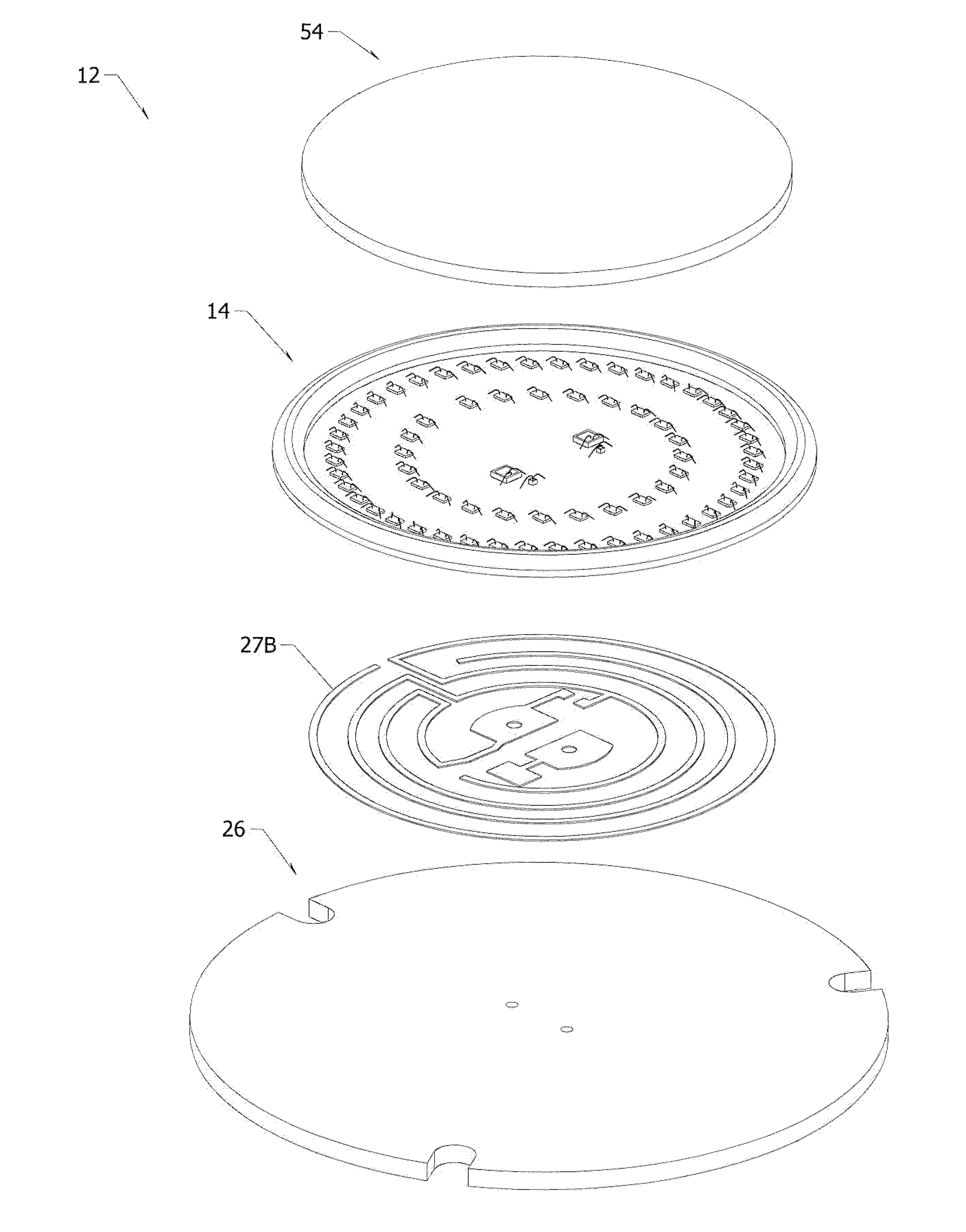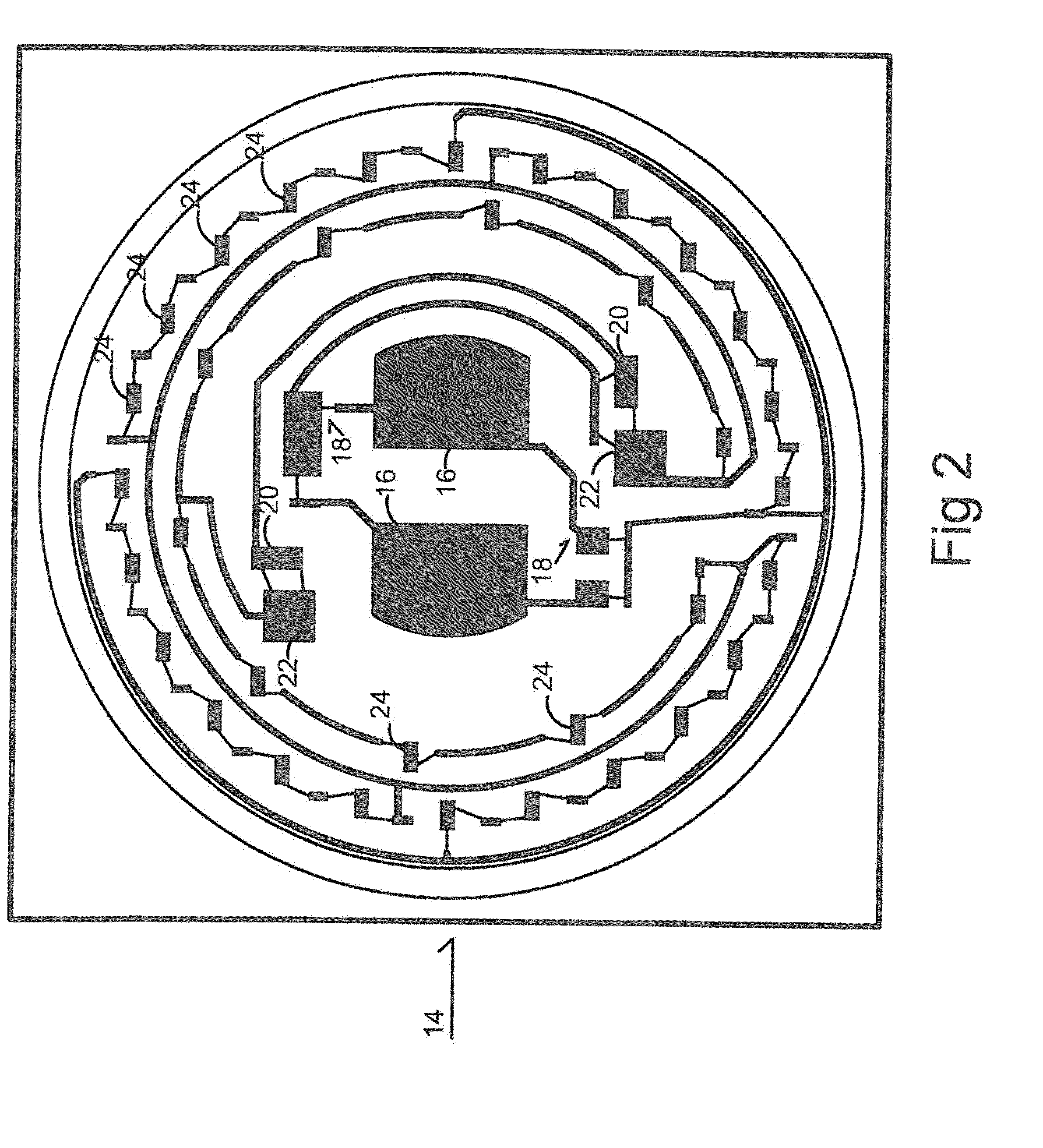Light Emitting System
a technology of led lighting and diodes, which is applied in the field of led lighting assemblies, can solve the problems of complex heat generation pathways, high cost and difficulty in manufacturing, and high complexity of typical led lighting devices
- Summary
- Abstract
- Description
- Claims
- Application Information
AI Technical Summary
Benefits of technology
Problems solved by technology
Method used
Image
Examples
Embodiment Construction
[0021]The figures show a lighting assembly 10 that includes a platform assembly 12 having a common processing engine 14. In one embodiment the common processing engine 14 includes electrical component dies 15 that receive electricity from an AC input 16. In particular a rectifier 18 receives electricity from the AC input 16 and the engine 14 can include protection elements such as a fuse or an MOV and driving elements 20. The driving elements 20 include transistors 22 such as MOSFETs, IGFETs, or the like for powering and dimming a plurality of light emitting diode (LED) dies 24. Further electrical connectors 25 extend from the engine 14 to provide an electrical communication path to other devices.
[0022]The processing engine 14 in one embodiment is formed on a substrate 26 that in one embodiment is a printed circuit board. Alternatively the substrate 26 is a hybrid substrate, or takes the form of other types of electric circuits. The substrate 26 can be any shape or size and in one e...
PUM
| Property | Measurement | Unit |
|---|---|---|
| electrically conductive | aaaaa | aaaaa |
| thermal conduction | aaaaa | aaaaa |
| heat | aaaaa | aaaaa |
Abstract
Description
Claims
Application Information
 Login to View More
Login to View More - R&D
- Intellectual Property
- Life Sciences
- Materials
- Tech Scout
- Unparalleled Data Quality
- Higher Quality Content
- 60% Fewer Hallucinations
Browse by: Latest US Patents, China's latest patents, Technical Efficacy Thesaurus, Application Domain, Technology Topic, Popular Technical Reports.
© 2025 PatSnap. All rights reserved.Legal|Privacy policy|Modern Slavery Act Transparency Statement|Sitemap|About US| Contact US: help@patsnap.com



